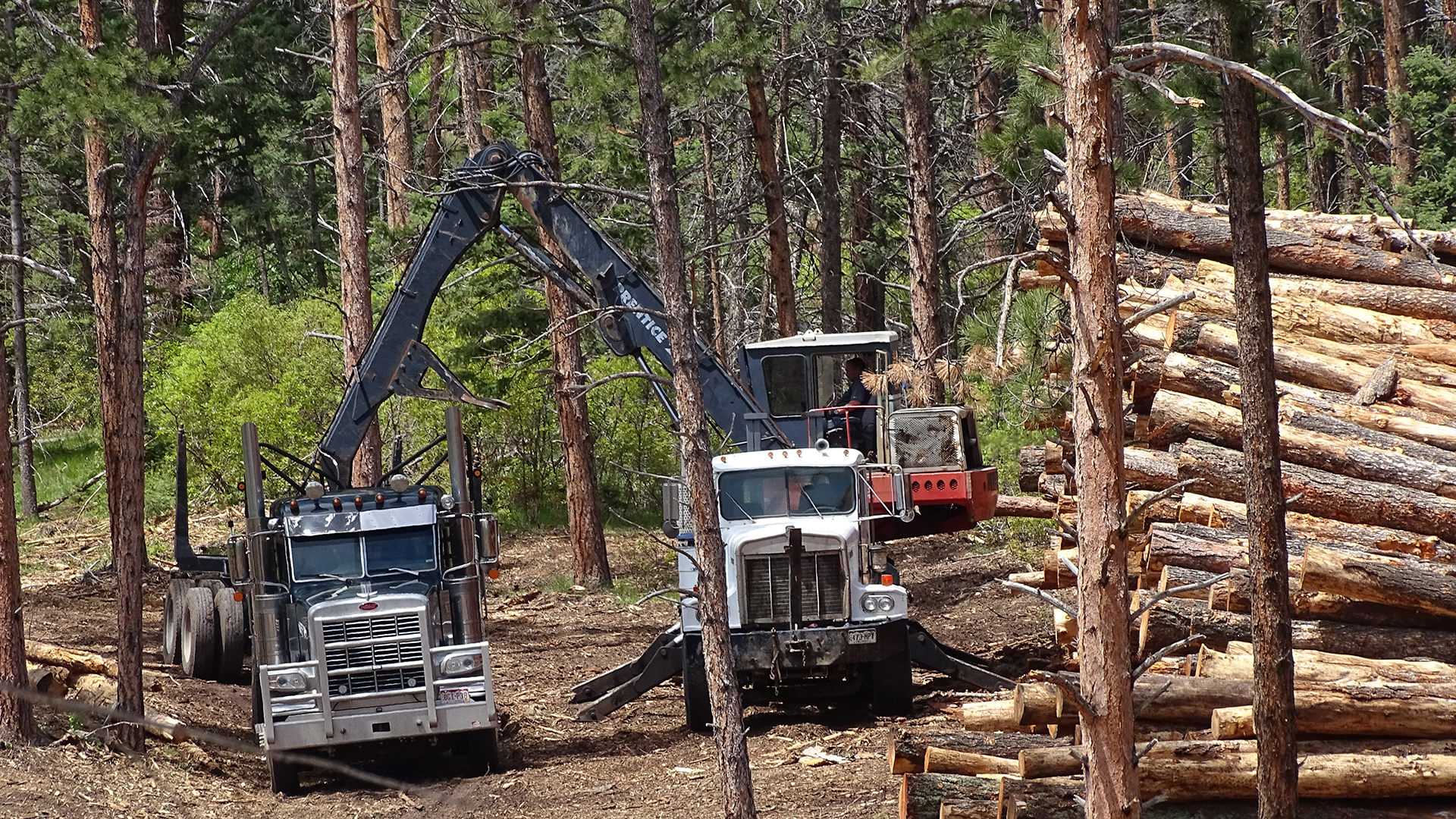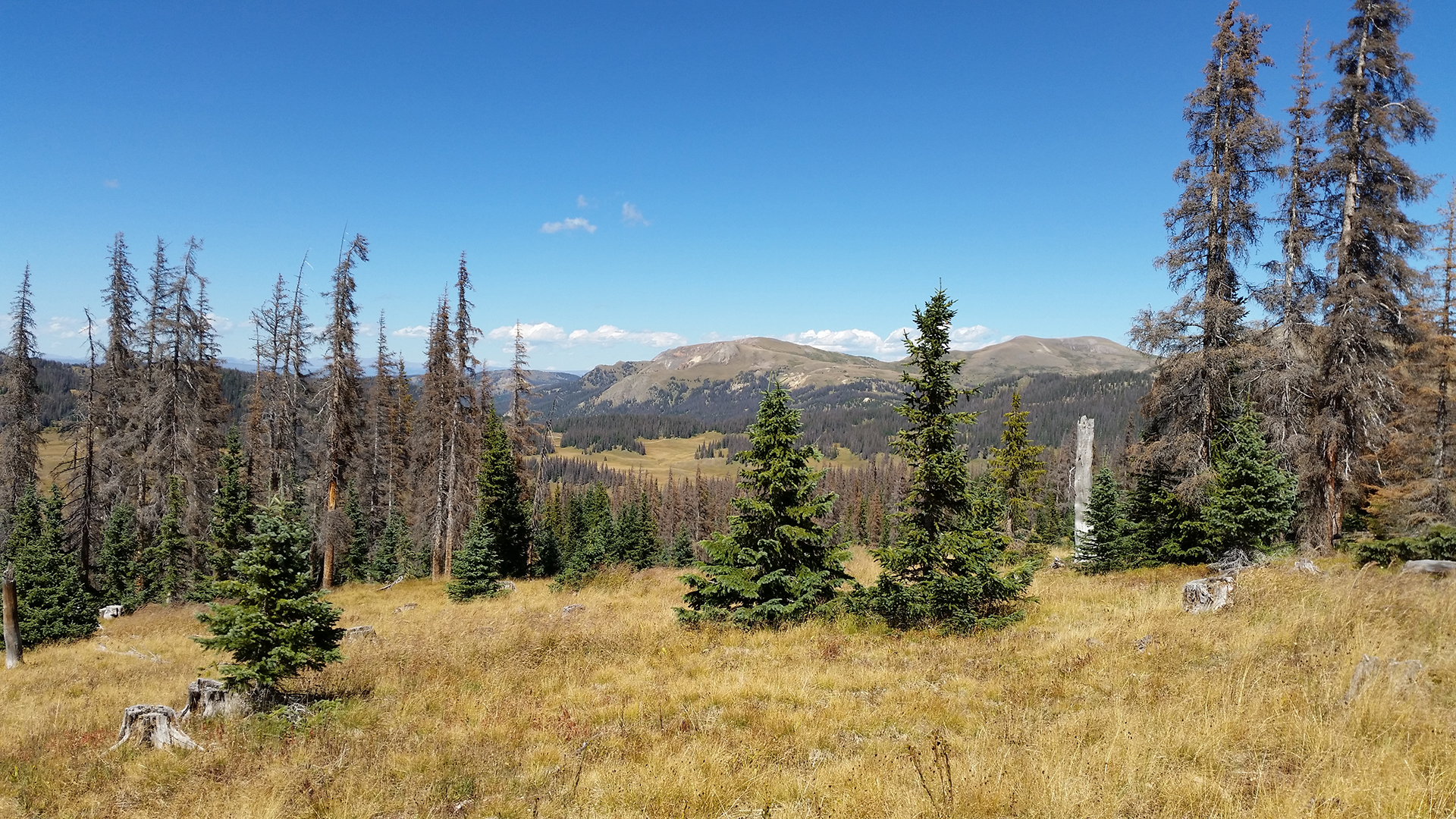
A tall stack of harvested timber dwarfs log trucks being loaded at the Greater Larkspur Community Fuels Mitigation Project. The Colorado State Forest Service is leading the three-phase wildfire mitigation effort in the Douglas County wildland-urban interface. Photo by Meg Halford, CSFS
Persistent drought is placing Colorado’s forests and communities in jeopardy as a catalyst for insect outbreaks and large, destructive wildfires, according to a new report from the Colorado State Forest Service.
This week, the CSFS presented its annual report on forest health to legislators at the state Capitol, highlighting the current conditions of Colorado’s forests and the need to reduce wildfire fuels.
“This is a unique moment for Colorado’s forests,” said Matt McCombs, state forester and director of the CSFS. “Drought continues to spur insect activity in our forests and increase the potential for more record-setting fires like those we’ve seen the last two years, whether that’s acres burned or structures lost. In this report, we look at the trends driving these forest health challenges and what the Colorado State Forest Service is doing to protect our forests and help communities adapt to a new normal for wildfire.”
2021 key forest takeaways
The 2021 Report on the Health of Colorado’s Forests focuses on “Managing Colorado’s Forests During Drought.” This video highlights the key takeaways from the report.
Access interactive maps and data

Stressed by drought, these Engelmann spruce trees in the Rio Grande National Forest succumbed to the spruce beetle. Drought weakens the defenses in trees and predisposes them to attack by bark beetles. If drought conditions persist, bark beetles can build up populations that reach epidemic levels and damage vast swaths of forest. Photo by Adam Moore, CSFS
Copies of the 2021 report are available at all CSFS field offices. A PDF of the report and interactive maps of insect and disease activity are available at bit.ly/ForestHealthReport.
Each year, the forest health report provides information to the Colorado General Assembly and residents of Colorado about the health and condition of forests across the state. Information for the report comes from an annual aerial forest health survey by the CSFS and U.S. Forest Service, Rocky Mountain Region, as well as field inspections, CSFS contacts with forest landowners and special surveys.
The Colorado State Forest Service is a service and outreach agency of the Warner College of Natural Resources at Colorado State University.